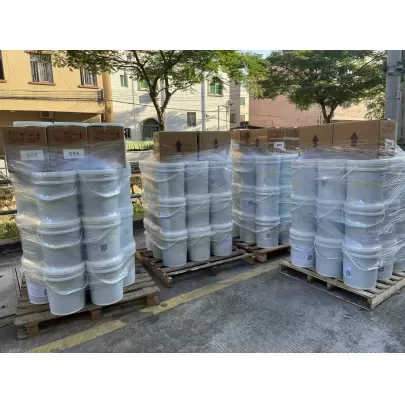If you are interested in our products or would like to learn more information, please contact us

Physical and chemical properties
Silicone potting compound is generally soft and elastic. There are many types of silicone potting compounds. Different types of silicone potting compounds vary greatly in terms of temperature resistance, water resistance, insulation, optical properties, adhesion to different materials, and softness and hardness. Silicone potting compound can be endowed with properties such as electrical conductivity, thermal conductivity and magnetic permeability by adding some functional fillers. The mechanical strength of silicone potting compound is generally poor. It is precisely by taking advantage of this property that it can be "pried open" for easy maintenance. That is, if a certain component malfunctions, it only needs to be pried open, and after replacing the new part, it can continue to be used.
The color of silicone potting compound can generally be adjusted as needed. Transparent or non-transparent or colored. Silicone potting compound performs extremely well in terms of shock absorption, electrical properties, water resistance, resistance to high and low temperatures, and anti-aging properties.
Two-component silicone potting compound is the most common type, which includes two types: condensation type and addition type. Generally, the adhesion force of condensation type to components and potting cavity is relatively poor. During the curing process, volatile low-molecular substances will be produced, and there will be a relatively obvious shrinkage rate after curing. Addition-cured (also known as silicone gel) has an extremely small shrinkage rate and no low-molecular-weight substances are produced during the curing process. It can be quickly cured by heating.
Application
Two-component silicone potting compound is the most common type, which includes two types: condensation type and addition type. Generally, the adhesion force of condensation type to components and potting cavity is relatively poor. During the curing process, volatile low-molecular substances will be produced, and there will be a relatively obvious shrinkage rate after curing. Addition-cured (also known as silicone gel) has an extremely small shrinkage rate and no low-molecular-weight substances are produced during the curing process. It can be quickly cured by heating.
Packaging and storage
The standard colors are white and black, and special colors can be produced according to customer requirements. The product is packaged in 11kg or 12kg units. This item is classified as non-hazardous. It is recommended to store the product in a well-ventilated, dry environment with temperatures below 30°C. After long-term storage, the filler in the glue may settle; stir it thoroughly before use to ensure optimal performance.
For more information on Safety Data Sheets (MSDS), Product Safety Data Sheets, and Product Inspection Reports, please contact us.
![]()
Ready to Get Started?
Contact Hocon Organic Silicon Product suppliers today to bring your idea or design to life sooner!
Please complete the contact form and we aim to get back to you within 24 hours.
Related Products
Our Market
Hocon International Co., Ltd. was established in 2015, is a manufacturer specializing in silicone products. Its product varieties include: organosilanes, silicone resin, silicone oil, modified silicone oil and their deep-processing products, the application fields of the products involve daily ...